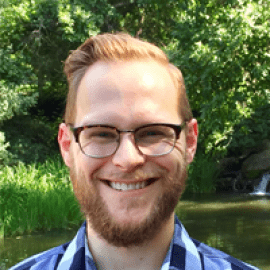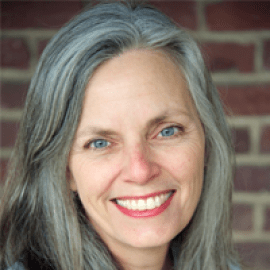
How Citizens in Greensboro, North Carolina, Used Participatory Budgeting
In recent years, people have been disenfranchised through voter ID laws, gerrymandering, and other efforts that have decreased the participation of low-income and minority voters. Against this backdrop, other efforts have aimed to foster greater citizen participation in governmental processes. In a new article published in NCA’s Communication and Critical/Cultural Studies, Vincent Russell and Spoma Jovanovic examine how Greensboro, North Carolina, put “participatory budgeting” (PB), wherein everyday people exert control over government budgets, into practice.
Background
For a few years, the Participatory Budgeting Greensboro organization (PB GSO) advocated for citizens to have a say in the budgetary process. In 2014, Greensboro became the first city in the South to use such a process and allocated $500,000 of the city’s budget to it. At that time, PB GSO volunteers became involved in the official budgeting process, serving as members of the steering committee and in other roles.
Community-Based Research
For the study, Russell and Jovanovic performed community-based research, meaning that community members and researchers collaborate on the project. Russell and Jovanovic recruited more than 40 people to join their research team. Team members, including Russell and Jovanovic, observed and took notes at Greensboro PB meetings, and Russell and Jovanovic analyzed the notes collected at those meetings.
In addition to analyzing the meeting notes, Russell and Jovanovic also conducted interviews with people who had participated in the process in various ways, such as serving as steering committee members or submitting ideas for consideration. The interviews focused on the participants’ experiences with and assessments of the PB process.
Participatory Budgeting in Greensboro
In the Greensboro PB process, residents first share ideas for projects to be funded by the city in their district. Those projects are developed with city staff into proposals that will be voted on in each of the city’s five districts. Each district receives up to $100,000 to fund projects. The projects that receive the most votes in each district can be funded; multiple projects in a district will be funded if they cost less than $100,000 and receive enough votes.
Before PB could begin, the steering committee had to determine who would be eligible to participate. The committee determined that anyone could propose ideas but wavered on who could vote on projects. Early in the process, the committee determined that people 11 years old and older could vote on PB projects. However, this resulted in criticism from multiple sources, including the mayor, the local newspaper, and a City Council representative. Because of this, the steering committee raised the voting age to 14. Russell and Jovanovic note that, despite the conflict over the voting age, the community clearly wanted to include young people in the process.
Russell and Jovanovic highlight a university student’s proposal to fund an app that would track the local bus schedule. City staff opposed the app, arguing that it could not be funded because an app requires ongoing maintenance and thus is not a “capital project.” The student argued that the project would be beneficial for the community, particularly for minority community members who are more likely to use public transportation. The app ultimately made it on the ballot, but city officials determined that because the app would be used by the entire city it needed to be one of the top-voted projects in each of the city’s districts. While this created a significant hurdle, the app received enough votes and ultimately was funded.
Russell and Jovanovic also discuss the controversy surrounding a second project: two stone game tables. The citizen who proposed the stone tables argued that they would serve as an informal meeting space for community members. PB participants determined that the tables should be installed in areas of the city that had experienced neglect. However, after citizens voted to fund the project, City Council members criticized it as wasteful and unnecessary. Although ultimately the cost of the tables was reduced, Russell and Jovanovic argue that the City Council members’ criticism shows that people in power believed “regular people were unable to be fiscally responsible.” In contrast to this viewpoint, Russell and Jovanovic suggest that the PB process actually places the consequences for these decisions in the hands of the citizens who are making them.
Russell and Jovanovic report that the PB process was successful at engaging citizens who had been previously disengaged from Greensboro politics. The collaborative process also resulted in more connection among community members. According to one participant, “It [PB] served to validate what I think the city truly wants to be about, and what I feel the community truly needs, which is more interaction, feedback, and collaboration with the people of the city to improve the city.”
Despite some limitations placed on the PB process (such as only being able to fund capital projects), the authors conclude that, through PB, participants succeeded in reframing how residents and city officials spoke about community issues. The PB process provided opportunities for participants to put social justice concerns at the center of discussions about community planning. Russell and Jovanovic also found that both the researchers and community members benefitted from the collaborative nature of the project, which had created an opportunity to reflect on the PB process and make improvements.



